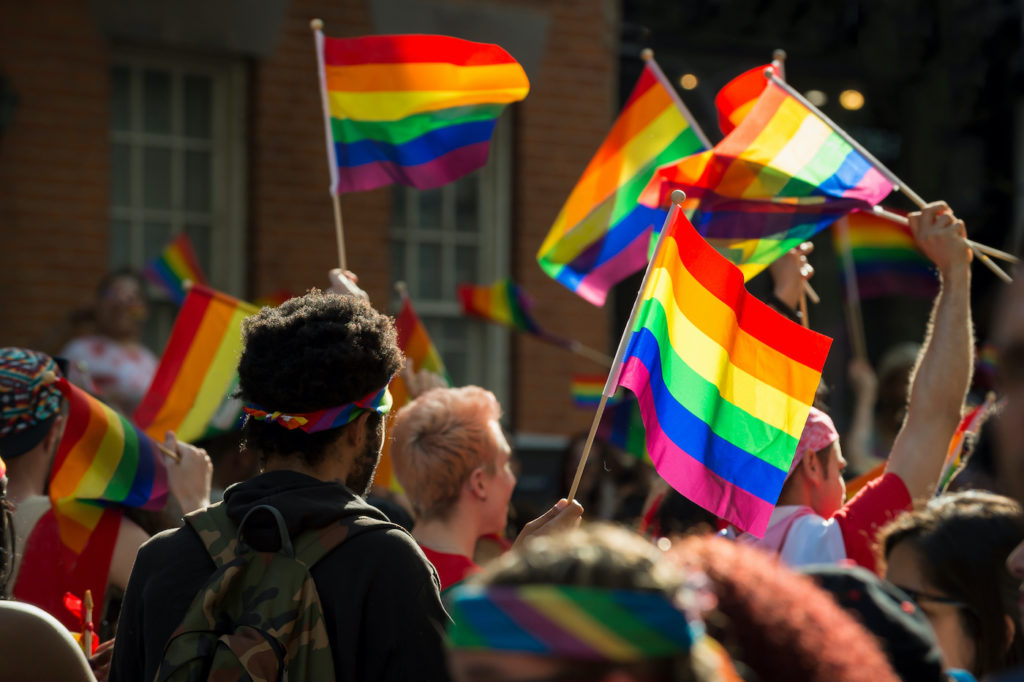In early December, the U.S. Supreme Court will hear the case of 303 Creative LLC v. Elenis and petitioner Lorie Smith, thus hearing a reprise of many of the arguments from its 2018 Masterpiece Cakeshop decision in the case of Jack Phillips against Colorado’s Anti-Discrimination Act (CADA). Once again, CADA is being weaponized against Colorado’s religious citizens for their beliefs about marriage, and its proponents cite scientifically dubious research on health harms for justification.
In fact, CADA causes far more harm than it claims to prevent, as in the case of conscientious objector Lorie Smith. CADA reads:
It is a discriminatory practice and unlawful for a person, . . . directly or indirectly: to refuse . . . the full and equal enjoyment of the goods, services, facilities, privileges, advantages, or accommodations of a place of public accommodation; . . . [or to] publish . . . communications . . . [saying] that an individual’s patronage or presence at a place of public accommodation is unwelcome, objectionable, unacceptable, or undesirable; because of disability, race, creed, color, sex, sexual orientation, gender identity, gender expression, marital status, national origin, or ancestry.
Smith operates a website design business in Colorado, 303 Creative LLC, where she uses her talents to tell the stories of her clients. She happily welcomes all persons as clients, but there are some messages she cannot create: she can create a website for a man and a woman getting married, but not for other couples (or groups) who wish to marry.
Start your day with Public Discourse
Sign up and get our daily essays sent straight to your inbox.Her policy has nothing to do with the individual clients per se, their claimed identity statuses, or even their declared sexual orientations. For instance, Smith could have created marriage messages for many of the over 450,000 LGBT-identified persons who reported being in opposite-sex marriages in a 2020 Gallup survey. But she could not do so for a heterosexually-identified couple entering into a polygamous marriage, such as a man taking a second wife while still married to his first. The reason lies in her deeply held convictions about the nature of marriage and her duty before God.
Smith wishes to publish a description of her faith and her beliefs about marriage on her business website and include a respectful notice explaining her policy. This would be an exercise in religious speech, the most fundamental type of speech protected by the First Amendment. It would also be a reasonable public accommodation: it would protect the conscience of the proprietor and save the time of potential customers.
However, the state of Colorado, enforcing CADA, has given Smith only two options: be silent or violate her conscience. If she expresses her faith message about marriage on her business website, she will be found in violation of the law and fined. If she offers to create websites for some weddings, she must be willing to create them for all weddings. After Smith filed suit, the Tenth Circuit Court ruled in favor of Colorado. In his dissent, Judge Tymkovich observed that the Court’s ruling denied Lorie Smith’s speech “any protection,” instead “endorsing CADA’s compulsion of both speech and silence.” How could anyone justify such an abrogation of Smith’s fundamental and constitutionally-protected liberties? By claiming that such speech results in harm to sexual minorities. In their brief opposing Lorie Smith, psychiatric epidemiologist Ilan Meyer and his colleagues center their arguments on the “minority stress theory,” asserting that health problems will arise or be exacerbated for LGBT-identified people due to feelings of stigma and expectations of rejection.
The state of Colorado, enforcing CADA, has given Smith only two options: be silent or violate her conscience.
The Dubious Claims of Minority Stress Theory (MST)
Scientists have documented significant health disparities between sexual minorities and heterosexual populations for decades. In his 2003 article, Meyer formalized a “minority stress model” to account for these disparities, stating: “Researchers’ preferred explanation for the cause of the higher prevalence of disorders among LGB people is that stigma, prejudice, and discrimination create a stressful social environment that can lead to mental health problems in people who belong to stigmatized minority groups.” Not only actual events of rejection, but also the expectation or perception of rejection, is enough to cause harm.
Sociologist Mark Regnerus and other scholars of family and sexuality filed an amicus brief supporting 303 Creative. They demonstrated how studies attributing the LGBT community’s negative health outcomes to minority stress have been overstated, often because of significant weaknesses in the research design. Some studies conflate key terms, making it difficult to distinguish between different types of stressors (e.g., grouping threats of “potential negative regard” with potential “violence”) much less link them to actual effects. American Psychological Association (APA) same-sex marriage advocacy, for example, grouped “social stigma” together with “violence.”
Many researchers focus on “minority stress” but downplay or ignore the multitude of other factors that affect health. For instance, one study cited in the APA’s brief examined the effects of “minority stress,” “structural stigma,” and physical health. While the study found minority stress effects, these accounted for only a “small proportion” of the variance in self-reported health measures. In the authors’ own words: “Other factors (e.g., diet, smoking, genetics, preexisting health conditions) likely explain a larger proportion of the variance when discussing the study limitations.”
Sound studies would be careful to distinguish sexual orientation from other factors that could be associated with a minority status, such as race, gender, or class. One recent investigation of “intersectional minority stress” found that participants discussed “an average of 5.7 identities (e.g., sexual orientation) or individual characteristics (e.g., socioeconomic status)” that were relevant to the intervention for stress reduction that was being tested. Measuring the effects of stress related to sexual orientation alone is far more complicated than the APA and other scholars present.
While the study found minority stress effects, these accounted for only a “small proportion” of the variance in self-reported health measures.
Regnerus and the family scholars also cited important observations of well-known psychologist and sex researcher J. Michael Bailey. When data on the negative health disparities for sexual minorities were first emerging, Bailey acknowledged in a 1999 article that a theory attributing the causes of the disparities to social factors was certainly one possibility. However, other theories were equally plausible, and he cautioned the scientific community not to let “sociopolitical concerns” hamper the investigation. The goal, he reminded his colleagues, was to know the truth and find effective ways to improve people’s mental health.
In 2020, Bailey lamented that his earlier warning had gone unheeded. Rather, over the course of more than two decades, researchers almost always conceded the foundational premise of MST despite the theory’s never being adequately tested or confirmed. Minority stress is usually invoked “post hoc”: researchers presume that negative health outcomes for LGBT people must have resulted from social stigma, but they never objectively demonstrate such stress to be a causal factor, nor do they demonstrate the mechanisms by which stress might cause the disparities. In Bailey’s words: “The minority stress model has been prematurely accepted as the default explanation for sexual orientation-associated differences in mental health,” despite the fact that research has not “generated findings uniquely explicable by the model” and “has ignored the model’s serious limitations.” He urges that the theory as a whole be reconsidered. So why did minority stress theory become the dominant explanatory narrative from the outset? Perhaps precisely for the “sociopolitical” reasons Bailey feared.
Is Political Ideology Coming before Science?
In his 1995 article on gay men’s mental health, Meyer wrote that “[t]he minority stress perspective, which views social conditions as the source of morbidity and distress for minority persons, advances an ideological agenda that promotes social change toward a more egalitarian society.” “From a public policy perspective,” he suggested, “cumulative evidence of the negative effects of prejudice and discrimination may help mobilize social forces to abolish oppressive policies.” Thus, minority stress could be invoked to show “the need for gay-affirmative programs in dealing with psychological distress in lesbians and gay men, and for public education and legislation in preventing antigay violence and discrimination.” Here, Meyer was advocating that the minority stress explanation and research be effectively harnessed to achieve political goals. This has led to premature conclusions and insufficient exploration of alternative explanations, which is exactly the kind of inadequate research Bailey had warned of.
Meyer also discussed how minorities of any sort can be cast in the role of either “victim of oppression” or “resilient actor.” Resilience and the ability of persons to cope with difficulties, deal with stigma, and respond to stress also deserve attention when discussing minority stressors. With respect to this, Meyer “endorsed” caution: focusing too much on subjective resilience “could lead to ignoring the need for important political and structural changes.”
Thus, in legal briefs such as Meyer’s and the APA’s, sexual minorities are only cast as victims of oppression. This explains why Lorie Smith’s free speech notice, or politely declining to create a particular message from a cakeshop, is alleged to cause intolerable psychological suffering. In reality, LGBT-identified people are resilient actors living in a pluralistic society with differing views of marriage. But this resilience is never admitted, and only victimhood is presented when it comes to the courtroom.
Meyer and the APA accuse conscientious objectors like Smith of acting on harmful and unjust prejudice. But is Smith’s respectful statement of faith really a display of the kind of prejudice one could call, in Professor Meyer’s words, “an objective evil to be abolished”? In its Obergefell ruling, the Supreme Court acknowledged that “[m]any who deem same-sex marriage to be wrong reach that conclusion based on decent and honorable religious or philosophical premises, and neither they nor their beliefs are disparaged here.” Likewise in Masterpiece Cakeshop, the Court held that, if religious ministers declined to conduct same-sex wedding ceremonies, their choice constituted “an exercise [of religion] that gay persons could recognize and accept without serious diminishment to their own dignity and worth.” So pastors can decline to celebrate same-sex weddings in good faith, but not their congregants who share the same motivation and beliefs?
And if CADA exists to protect minorities, the protection should also be extended to people like Smith who, because of their religious beliefs, are in a minority today. Smith now faces enormous stress and social stigma of her own from hate mail, death threats, online vitriol, and numerous attempts to hack her website and harm her business. Yet Colorado state officials ignore the harms she is suffering. Rather, they are aggressively threatening her with fines and penalties if she dares to conduct her business according to her conscience. Some zealous state governments are even more severe; in New York, photographer Emilee Carpenter is facing six-figure fines and jail time.
LGBT-identified people are resilient actors living in a pluralistic society with differing views of marriage. But this resilience is never admitted and only victimhood is presented when it comes to the courtroom.
Government Should Serve All People, Not the Agenda of the Powerful
The cultural balance of power has shifted to favor sexual minorities. There is now record high social acceptance of same-sex marriage. While the minority stress theory has been effective in helping advance an “ideological agenda” for “social change,” it has been much less effective in explaining the negative health disparities found among sexual minorities—disparities that remain despite ever-broadening social acceptance. It’s time to dignify LGBT-identified people as the individuals with agency and resilience that they are. Invoking minority stress theory is not about protecting LGBT-identified people from harm. It’s about stamping out dissent and vilifying those who disagree.
If the Masterpiece ruling was too narrow, the Supreme Court now has the opportunity to make it wider and protect religious believers like Lorie. After all, laws exist to protect the dignity of all citizens, regardless of their religious beliefs or sexual identification.














